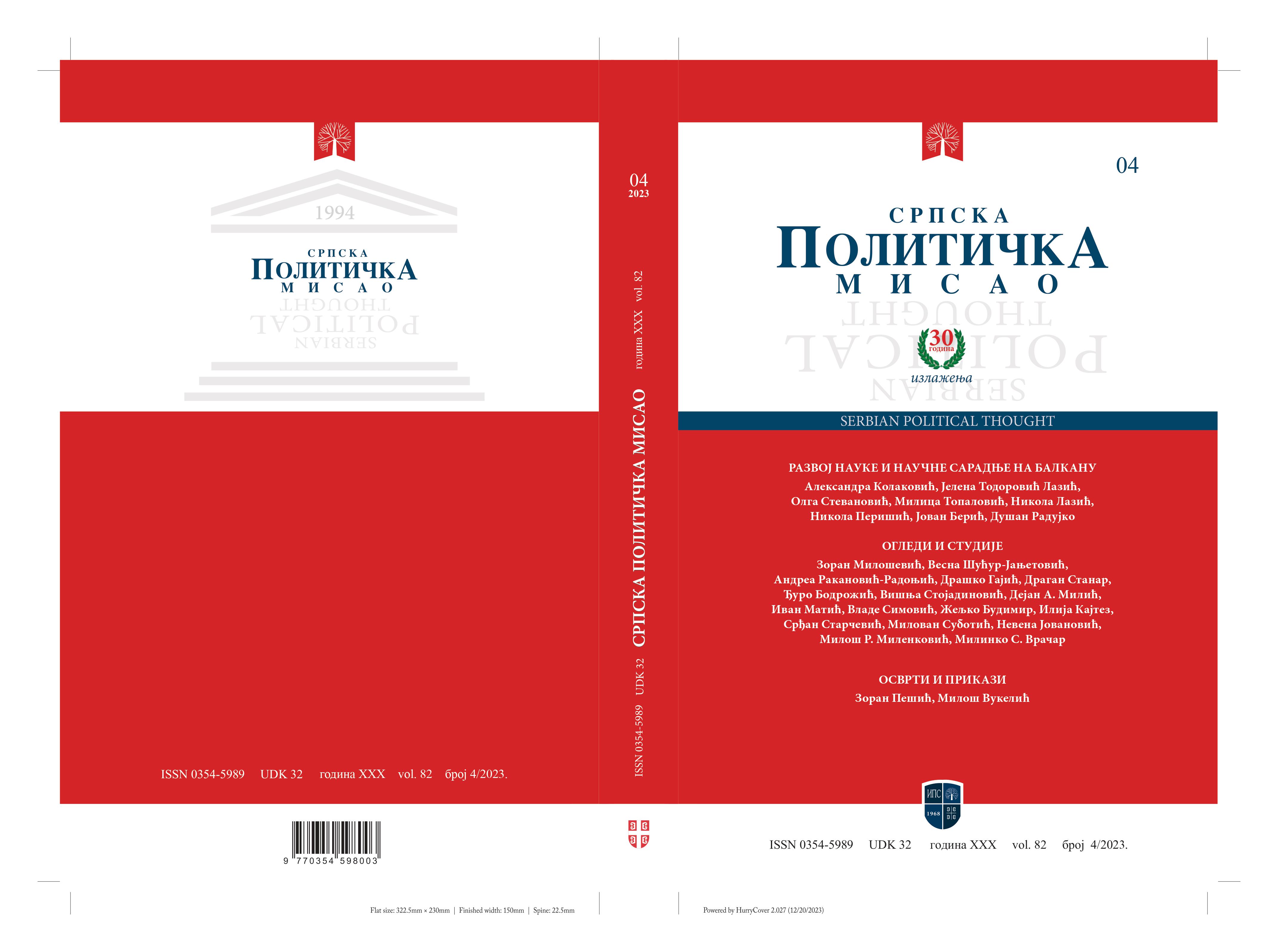О НАЦИОНАЛНОМ РАДУ СВЕТОГ САВЕ
Sažetak
Нема никакве сумње да је Свети Сава средишња личност српске историје, у томе се слажу и учена историја и народна традиција. У личности овог српског светитеља подудариле су се историја и легенда. Своје историјске време Срби рачунају од Стефана Немање, у монаштву Симеона, а да би то било тако одлучујући допринос дао је његов најмлађи син Растко – Свети Сава. Од свега што је дао српском народу најважнија је аутокефална црква: стварањем самосталне српске цркве Свети Сава је постао и творац српске нације. Књижевни текстови Светог Саве стоје на почетку српске књижевности и српске културе. Успомена на њега обједињавала је српски народ кроз читаву историју.
Reference
· Бодрожић Ђуро (2018) Ђуро Бодрожић, Српски идентитет, Београд, Српска књижевна задруга.
· Брендорф Ернл (2011) Ернл Бредфорд, Велико издајство: Цариград 1204. Београд, Алгоритам.
· Босанска вила, год. XII, 1897.
· Велимировић Николај (2005) Николај Велимировић, Живот Светог Саве, Београд, БеоСинг.
· Геземан Герхард (1984) Герхард Геземан, Са српском војском кроз Албанију 1915-1916, Београд, Српска књижевна задруга.
· Димитријевић Стеван И. (1926) Стеван М. Димитријевић, Свети Сава у народном веровању и предању, Београд.
· Доментијан (2001) Доментијан, Житије Светог Саве, Београд, Српска књижевна задруга.
· Достојевски Фјодор М. (1981) Фјодор М. Достојевски, Књижевно критички чланци: пишчев дневник I, Београд, Рад.
· Калај Вењамин (1882) Бењамин Калај, Историја српскога народа, Београд, Књижар издавач Петар Ћурчић.
· Маринковић Радмила (2007) Радмила Маринковић, Светородна господа српска, Београд, Друштво за српски језик и књижевност Србије.
· Мицкјевич Адам (1955) Адам Мицкјевич, О српској народној поезији, Цетиње, Народна књига.
· Оболенски Димитрије (1991) Димитрије Оболенски, Шест византијских портрета, Београд, Српска књижевна задруга: Просвета.
· Поповић Јустин (1962) Јустин Поповић, Живот Светога Саве и Светога Симеона, Минхен.
· Станојевић Станоје (1935) Станоје Станојевић, Свети Сава, Београд, Државна штампарија.
· Самарџић Радован (1990) Радован Самарџић, Косовско опредељење, Београд, Српска књижевна задруга.
· Слијепчевић Перо (1924) Перо Слијепчевић, Свети Сава, Сарајево, Обод.
· Теодосије (1992) Теодосије, Житије Светог Саве, Београд, Српска књижевна задруга.
· Троицки Сергије (1929) Сергије Троицки, Свети Сава и Словенство, Нови Сад, Штампарија Јовановић и Богданов.
· Тројановић Сима (1898) Сима Тројановић, Босна и Херцеговина, Београд, Парна радикална штампарија.
· Ћирковић Сима (2004) Сима Ћирковић, Срби међу европским народима, Београд, Equilibrium.
· Ћоровић Владимир (1928) Владимир Ћоровић, Списи Светог Саве,
· Ћоровић Владимир (1990) Владимир Ћоровић. Свети Сава у народном предању, Београд, Народно дело.
· Црњански Милош (1934) Милош Црњански, Свети Сава, Београд, Луча.
· Црњански Милош (1999) Милош Црњански, Есеји и Чланци II: Историја, полемике, разговори, Београд, Задужбина Милоша Црњанског-Наш дом.

